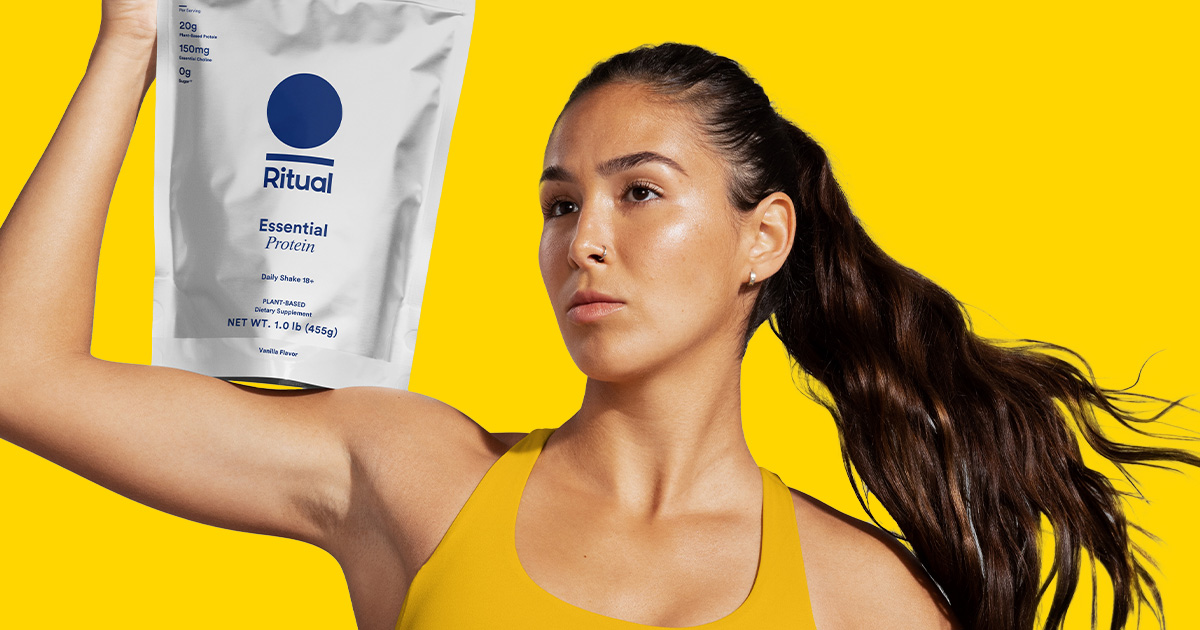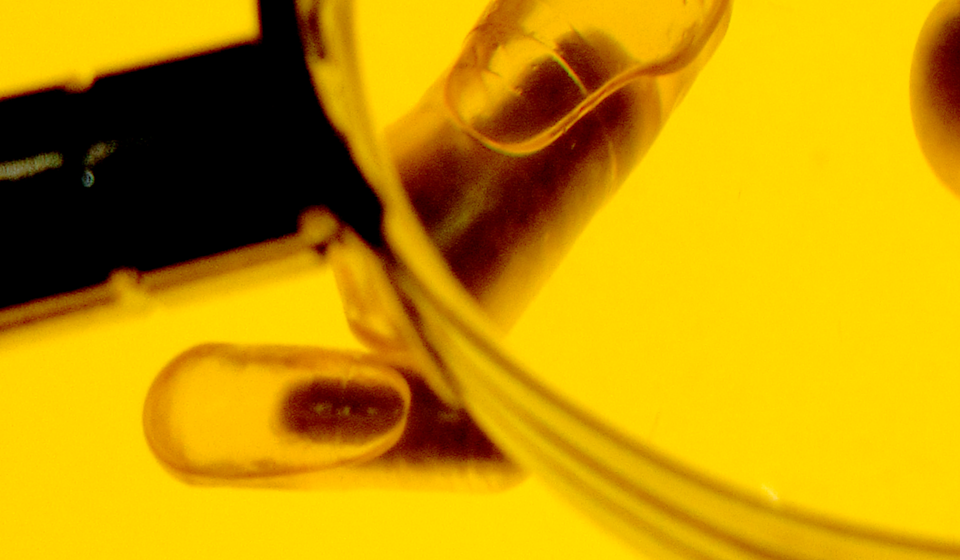Let’s dive deeper.
“When muscle protein synthesis exceeds muscle protein breakdown, muscle hypertrophy (aka muscle growth) occurs,” says Dr. Nima. “Muscle hypertrophy is dependent on the balance between muscle protein synthesis and breakdown and can be influenced by many factors, including nutrition and exercise.”
By now, it's probably pretty obvious that muscle protein synthesis is a pretty complex topic. But based on the latest research, there are things you can do to support muscle protein synthesis.* Keep reading to learn more.
4 Ways to Support Muscle Protein Synthesis and Lean Muscle Mass*
1. Look For High Quality Protein
Dietary protein provides amino acids needed for the synthesis of muscle protein, and that means emphasizing high-quality protein sources with complete amino acid profiles. (Quick crash course: Protein is made up of building blocks called amino acids, nine of which are considered “essential.” When a food or meal contains all nine essential amino acids at sufficient amounts, it’s considered “complete.”)*
Dietary protein-derived essential amino acids act as signals to induce muscle protein synthesis. Differences in protein types and sources result in differences in the magnitude of the muscle protein synthesis response, largely because of the differences in the availability of essential amino acids (and L-leucine in particular) to the muscle. This availability depends on different factors, including a protein’s essential amino acid composition and overall content. Suboptimal protein sources are associated with a lower essential amino acid content or shortage in a specific amino acid such as L-leucine, L-lysine, or L-methionine. All these amino acids are needed for protein synthesis and lack of one or more will compromise the protein synthesis response.* (1)
In other words, protein quality—and not just how much you're consuming—can be a pretty big factor here. That means considering the amino acid profile of the protein source in question. Certain animal protein sources provide a strong stimulus in muscle protein synthesis, and recently it’s been shown that certain plant-based proteins have a relatively high and balanced amino acid content. For example, soy protein has essential amino acid contents that meet the requirements as recommended by the World Health Organization/Food and Agriculture Organization of the United Nations/United Nations University (WHO/FAO/UNU), and pea protein comes really close (falling short on methionine - which is why we added L-Methionine to our Essential Protein to provide a complete amino acid profile). This information suggests certain plant proteins could be effective alternatives to animal proteins for a meaningful stimulation of muscle protein synthesis, especially if you consider pairing certain plant-based options together.* (3)
2. Monitor Your Daily Protein Intake
Again, quality is an important factor—but quantity also still plays a role. Research suggests a higher consumption of protein can significantly boost your body's anabolic response, which means it helps build muscle and recover faster. This is because it reduces the breakdown of existing muscle tissue. (4) Studies have also shown that around 20g (or roughly 0.3g/kg of body weight) of rapidly digested, high quality protein helps maximize the muscle protein synthesis response at rest, and after exercise. Our Essential Protein helps with the heavy lifting by providing 20g of protein to stimulate muscle protein synthesis and to form lean muscle.*
However, in older adults this amount may not be enough, with recent studies suggesting a heightened “anabolic resistance” as we age, and a need for further stimulating muscle protein synthesis.* (4,5) While increased protein intake (30-40 g) for older individuals can help maximize muscle protein synthesis, other strategies may be more practical and easily adopted—and this is where quality (aka the amino acid profile) comes back into play. Specific amino acids have been shown to increase muscle protein synthesis and net balance, and supplementing with leucine, isoleucine, and valine has been used to support muscle maintenance. In particular, increased leucine consumption has been shown to increase the muscle protein synthesis rate in older individuals and may be of benefit to address normal age-related declines in muscle mass. There is also interest in β-hydroxy-β-methylbutyrate (HMB), a key metabolite of leucine, with demonstrated effects on protein synthesis and protein breakdown. Recent findings also suggest an age-related decline in endogenous HMB (aka the kind we produce ourselves) in the body. HMB supplementation has been tested in older adults, and there is a growing body of evidence that suggests HMB helps support lean muscle maintenance.* (6)
3. Have Protein at the Right Time
How long does protein synthesis last? Muscle protein synthesis is short lived and lasts around 4-5 hours. Our bodies thrive on consistency so consuming protein in regular intervals throughout the day is needed to help maximize muscle growth at rest, and timing protein consumption after exercise is also a key factor in this process.
4. Step Up Resistance Training
Although physical activity and exercise training of any type is excellent for overall health, aerobic exercise won’t do much for increasing muscle mass. Resistance exercise, however—that is, exercises that create mechanical tension and metabolic stress—certainly will. Muscle hypertrophy occurs when muscle protein synthesis is promoted over muscle protein breakdown. This can be achieved by targeted resistance training and sufficient protein intake which is why consideration should be given to both training type and diet. P.S. Exercise itself sensitizes the effects of protein to maximize muscle protein synthesis. This gives more reason to have protein within the first few hours after a workout, given the synergistic effect on muscle protein synthesis. * (7)
Another way of putting it? “It’s true that you need to move it or lose it," says Dr. Nima. "Resistance exercise combats the loss of muscle mass, which is particularly important for older adults.”
For increasing muscle mass through exercise, Dr. Nima says that “resistance training with a moderate number of reps (6−12), short rest intervals (60 seconds), multiple sets (3−6), and moderate loads (around 60−80% of your 1 rep max), with subsequent increases in training volume (12–28 sets per muscle, per week) generates greater metabolic stress which better stimulates muscle hypertrophy.” Studies also show longer rest periods lead to a greater muscle protein synthetic response. (8) An important note: Maintaining proper form and technique throughout is essential. You don’t want to injure yourself in the process, which can be counterproductive in attempting to enhance muscle protein synthesis, and the maintenance or gain of lean muscle mass.
Our Essential Protein is your daily partner in muscle protein synthesis. With 20 grams of plant-based pea protein in every serving, it provides the essential building blocks our body needs to support lean muscle mass and supports muscle recovery. Made with clean, traceable ingredients, Essential Protein helps with the heavy lifting by being a convenient and delicious way to help stimulate muscle protein synthesis.*













